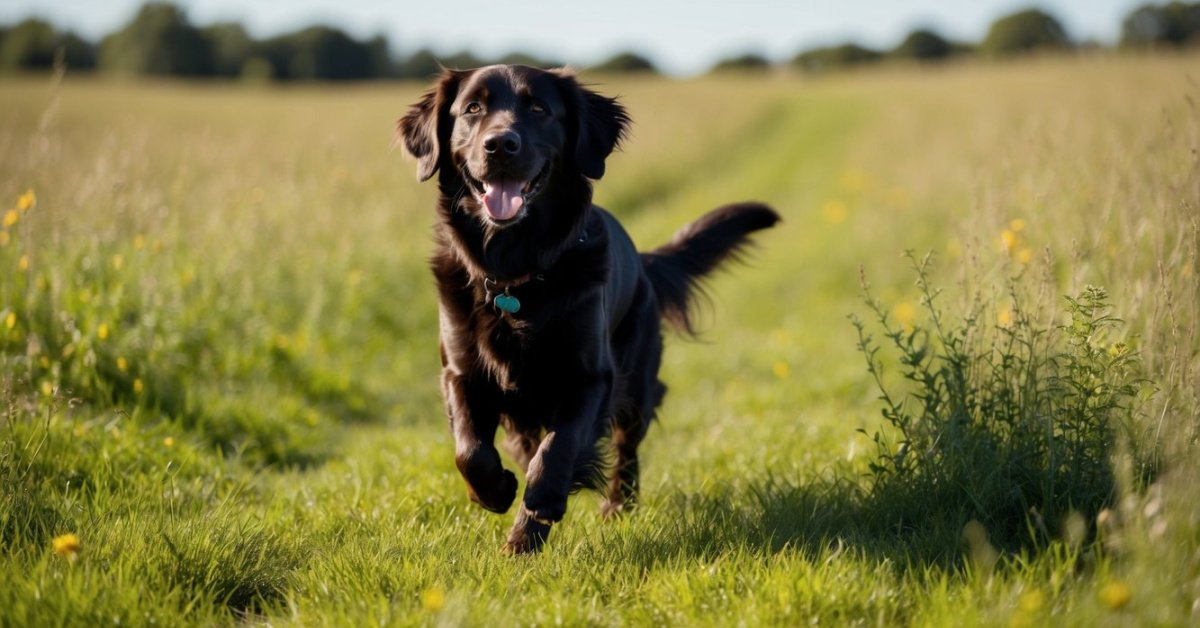Golden Retrievers are one of the most popular dog breeds in the world. They are known for their friendly nature, loyalty, and intelligence. If you are a new owner of a Golden Retriever puppy, you may be curious about their growth and development. In this article, we will discuss the Golden Retriever growth chart, what factors affect their growth, and how to ensure your puppy grows up healthy and strong.
Understanding Golden Retriever Growth is important to ensure that your puppy is growing at a healthy rate. Golden Retrievers typically reach their full height by the age of one year, but they continue to gain weight and muscle mass until they are around two years old. Factors such as genetics, nutrition, exercise, and health can all affect your puppy’s growth. By monitoring your puppy’s growth and following a few simple tips, you can help ensure that they grow up to be happy and healthy dogs.
Key Takeaways
- Understanding Golden Retriever Growth is important for new puppy owners to ensure their furry friend is growing at a healthy rate.
- Factors such as genetics, nutrition, exercise, and health can all affect your puppy’s growth.
- By monitoring your puppy’s growth and following a few simple tips, you can help ensure that they grow up to be happy and healthy dogs.
Understanding Golden Retriever Growth
https://www.youtube.com/watch?v=jj98vcaXVjI&embed=true
As a Golden Retriever owner, you may be curious about how your furry friend will grow and develop over time. Understanding Golden Retriever growth is essential to ensure that your dog is healthy and happy throughout their life.
Growth Stages
Golden Retrievers go through several growth stages, including neonatal, transitional, socialization, and juvenile stages. During the neonatal stage, which lasts from birth to two weeks, your puppy’s eyes and ears are closed, and they will rely on their sense of smell to find their mother’s milk.
In the transitional stage, which lasts from two to four weeks, your puppy’s eyes and ears will open, and they will start to explore their surroundings. During the socialization stage, which lasts from four to twelve weeks, your puppy will learn social skills and develop their personality.
Growth Rate
Golden Retrievers are medium to large-sized dogs, with males weighing between 65-75 pounds and females weighing between 55-65 pounds on average. Your Golden Retriever will reach their full adult height and size by the time they are one year old.
During the first six months of their life, your Golden Retriever will grow rapidly. They will gain around 2-3 pounds per week, and their height will increase by around 1 inch per week. After six months, their growth rate will slow down, and they will continue to grow until they reach their full adult size.
Growth Milestones
Monitoring your Golden Retriever’s growth milestones is essential to ensure that they are healthy and developing properly. Some of the key growth milestones to look out for include:
- At six months of age, your Golden Retriever will be around half their adult size.
- By one year, your Golden Retriever will have reached their full adult height and size.
- Golden Retrievers have a slower growth rate than some other breeds, which means they will continue to gain weight and muscle until they are around two years old.
Growth Charts
Using a Golden Retriever growth chart can help you track your puppy’s growth and ensure that they are developing correctly. Growth charts typically include measurements such as height and weight, along with other relevant data points.
Keep in mind that every Golden Retriever is different, and their growth rate and size may vary. However, using a growth chart can give you a general idea of what to expect and help you monitor your puppy’s health and development.
In summary, understanding Golden Retriever growth is crucial to ensure that your furry friend is healthy and happy throughout their life. By monitoring their growth milestones and using a growth chart, you can help your Golden Retriever grow up strong and healthy.
Health Factors Affecting Growth
https://www.youtube.com/watch?v=VH9J-eJV6A8&embed=true
As a responsible Golden Retriever owner, it is important to keep an eye on your puppy’s growth and ensure that it is on track. However, several health factors can affect your dog’s growth, and it is crucial to be aware of them.
Overfeeding
Overfeeding your Golden Retriever puppy can lead to obesity, which can cause several health problems such as hip dysplasia, cancer, and aortic stenosis. It is essential to feed your puppy a balanced diet and avoid giving them too many treats.
Malnutrition
Malnutrition can also have long-term effects on your Golden Retriever’s health and life. It is crucial to ensure that your puppy is getting the right amount of nutrients to support their growth and development. You can use a Golden Retriever growth chart to track their progress and ensure healthy development.
Genetic Diseases
« Best Wet Canned Foods for Goldendoodles: Top Picks for a Happy Pup
Best Ear Cleaner for Goldendoodles: Keep Your Pup’s Ears Clean and Healthy »
Golden Retrievers are prone to several genetic diseases such as hip dysplasia, oral tumors, and heart problems. It is essential to get your puppy screened for these genetic diseases and take preventive measures to ensure that they stay healthy.

Parasites
Parasites such as fleas, ticks, and worms can affect your Golden Retriever’s growth and development. It is crucial to keep your puppy free from parasites by regularly grooming them and using preventive measures such as flea and tick collars.
Vaccinations
Vaccinations are essential to protect your Golden Retriever from several diseases such as parvo, rabies, and distemper. It is crucial to follow your veterinarian’s vaccination schedule to ensure that your puppy stays healthy and protected.
In conclusion, several health factors can affect your Golden Retriever’s growth and development. It is essential to be aware of these factors and take preventive measures to ensure that your puppy stays healthy and happy.
Nutrition and Exercise for Growth
https://www.youtube.com/watch?v=aIyb2L20WaE&embed=true
Proper nutrition and exercise are essential for your Golden Retriever’s growth and development. Feeding your dog a balanced diet that is rich in protein, vitamins, and minerals is crucial for healthy growth. Make sure to choose high-quality dog food that is specifically formulated for large breed puppies.
When it comes to feeding your puppy, it is recommended to follow the feeding guidelines on the dog food package. Typically, a puppy should be fed three to four small meals a day until they are six months old. After six months, you can switch to feeding them two meals a day.
In addition to a healthy diet, exercise is also important for your Golden Retriever’s growth. Puppies should have plenty of opportunities to play and exercise, but it is important not to overdo it. Too much exercise can be harmful to a puppy’s growing bones and joints.
As your puppy grows, you can gradually increase the length and intensity of their exercise routine. Walking, running, and playing fetch are all great ways to keep your puppy active. Just make sure to give them plenty of breaks and always have fresh water available.
Overall, providing your Golden Retriever with a balanced diet and plenty of exercise will help ensure healthy growth and development. Remember to consult with your veterinarian if you have any concerns about your puppy’s nutrition or exercise routine.
Spaying, Neutering and Growth
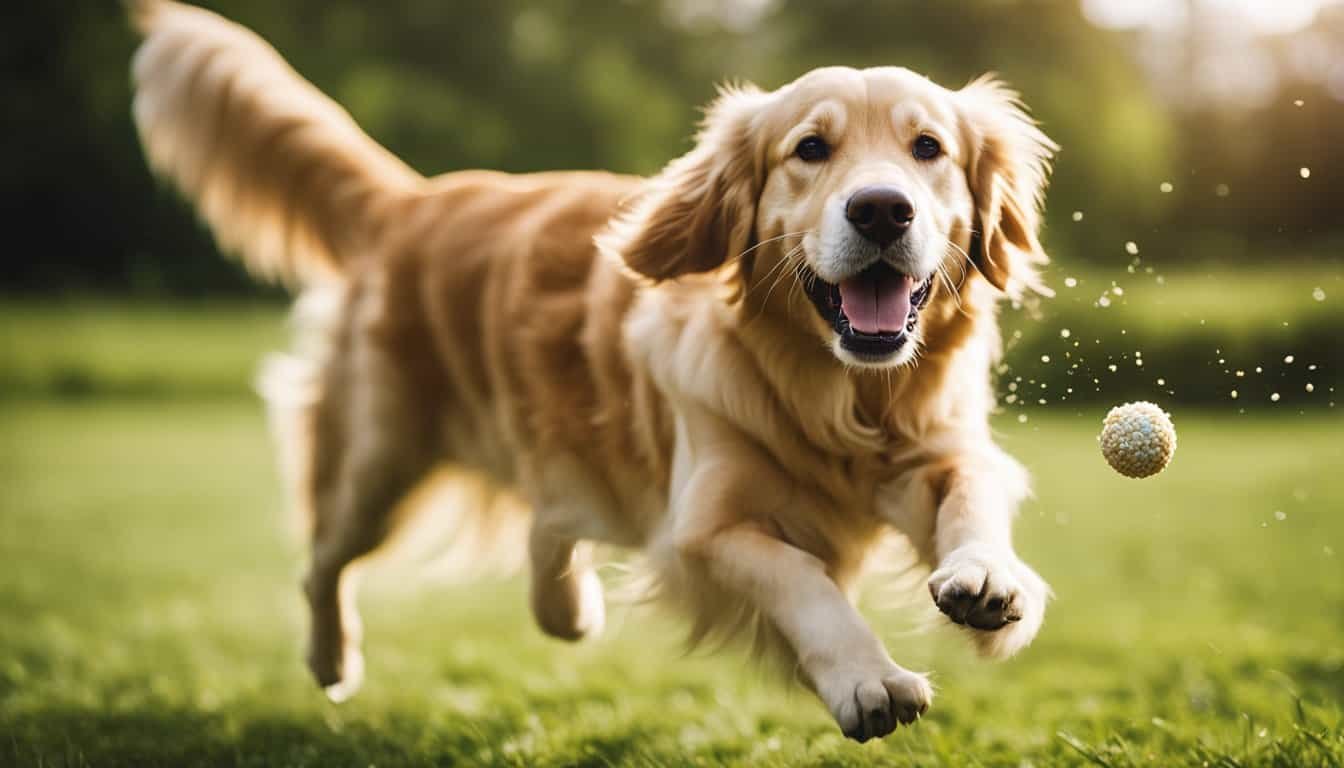
If you’re considering spaying or neutering your Golden Retriever, it’s important to understand how it can affect their growth. Spaying and neutering involve removing a dog’s reproductive organs, which can have an impact on their hormone levels and growth patterns.
Spaying, which is the removal of a female dog’s ovaries and uterus, can cause a decrease in estrogen and progesterone levels. This can lead to a decrease in bone density and muscle mass, which can result in a slower growth rate. However, spaying can also prevent certain health issues such as mammary tumors and uterine infections.
Neutering, which is the removal of a male dog’s testicles, can cause a decrease in testosterone levels. This can also lead to a slower growth rate and a decrease in muscle mass. However, neutering can also prevent certain health issues such as testicular cancer and prostate problems.
It’s important to note that spaying and neutering should be done at the appropriate age to avoid any negative impact on your dog’s growth. According to the American Veterinary Medical Association, it’s recommended to spay or neuter your Golden Retriever between the ages of six and twelve months.
While spaying and neutering can affect your Golden Retriever’s growth, it’s important to consider the overall health benefits. Talk to your veterinarian about the best time to spay or neuter your dog and any potential risks or benefits.

Grooming and Socialization
https://www.youtube.com/watch?v=LHyXgXsWnPc&embed=true
Grooming your Golden Retriever is an essential part of maintaining their coat’s health and appearance. This breed has a dense, water-repellent double coat that requires regular brushing to prevent matting and tangling. Using a slicker brush and comb, you should brush your Golden Retriever’s coat at least once a week, more frequently during shedding seasons.
Socialization is also crucial for your Golden Retriever’s development. These dogs are naturally friendly and social, but they still need to be exposed to different people, animals, and environments to become well-rounded and confident adults. Early socialization can help prevent behavior problems such as fearfulness and aggression. Take your puppy to puppy classes, dog parks, and on walks to help them develop their social skills.
Training your Golden Retriever is another important aspect of their development. These dogs are intelligent and eager to please, making them easy to train. Positive reinforcement training methods work best with Golden Retrievers. Use treats, toys, and praise to reward good behavior and avoid punishment or harsh training methods.
Golden Retrievers are loyal and playful dogs that enjoy spending time with their owners. They love to play, especially with toys that stimulate their minds and bodies. Provide your Golden Retriever with plenty of toys, such as puzzle toys and chew toys, to keep them entertained.

Finally, Golden Retrievers are known for their love of swimming. They have a natural affinity for water and enjoy swimming and playing in lakes, rivers, and pools. Swimming is a great form of exercise for these dogs and can help keep them healthy and happy.
Choosing a Golden Retriever Puppy
https://www.youtube.com/watch?v=do2ABAWG1JM&embed=true
So, you’ve decided to bring home a Golden Retriever puppy. Congratulations! These furry little friends are loyal, friendly, and make great family pets. However, before you bring one home, there are a few things you should consider.
Firstly, you need to find a reputable breeder or a rescue organization. Look for breeders who are registered with the American Kennel Club (AKC) or other reputable organizations. You can also look for Golden Retriever rescue organizations in your area. These organizations rescue Golden Retrievers from abusive or neglectful situations and help them find new, loving homes.
When choosing a puppy, it’s important to look at the litter as a whole. Look for a litter where the puppies are lively, curious, and friendly. Avoid litters where the puppies seem lethargic or uninterested in their surroundings.
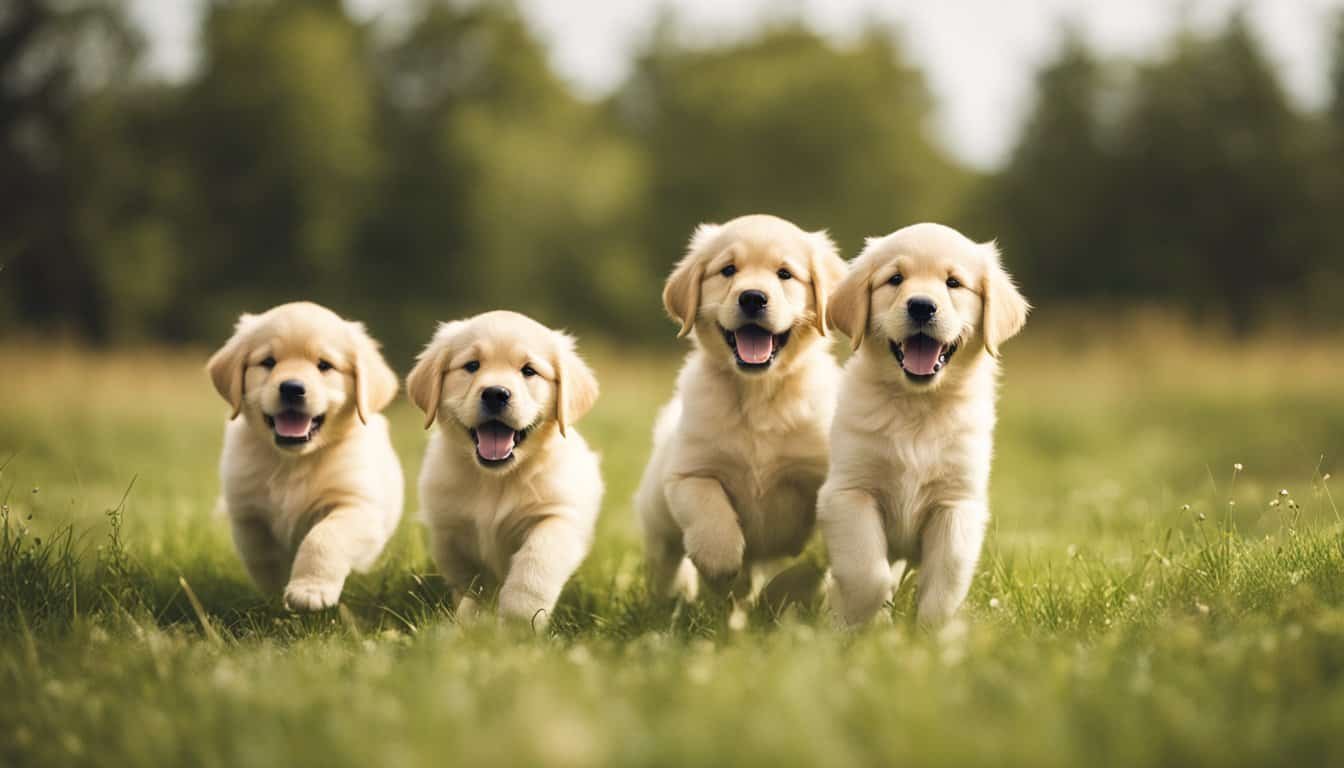
It’s also important to meet the mother of the litter and, if possible, the father as well. This will give you an idea of what your puppy may look like and what their temperament might be like. Make sure the mother is healthy and well-cared for.
Check with the breeder to see if the puppies have been weaned and if they have received their first round of vaccinations. If the puppies are not yet weaned, make sure the breeder is taking good care of them and that they are being fed properly.
If you’re interested in a show dog or a puppy that meets breed standards, make sure you let the breeder know. They can help you find a puppy that meets those requirements. If you’re interested in a mixed breed Golden Retriever, make sure you research the other breed in the mix to understand what traits your puppy may inherit.
It’s also a good idea to look into pet insurance for your new puppy. This can help cover the cost of unexpected veterinary bills and give you peace of mind knowing your puppy is covered.
Overall, choosing a Golden Retriever puppy can be an exciting and rewarding experience. Just make sure you do your research and choose a puppy that is healthy, well-cared for, and fits your lifestyle and needs.
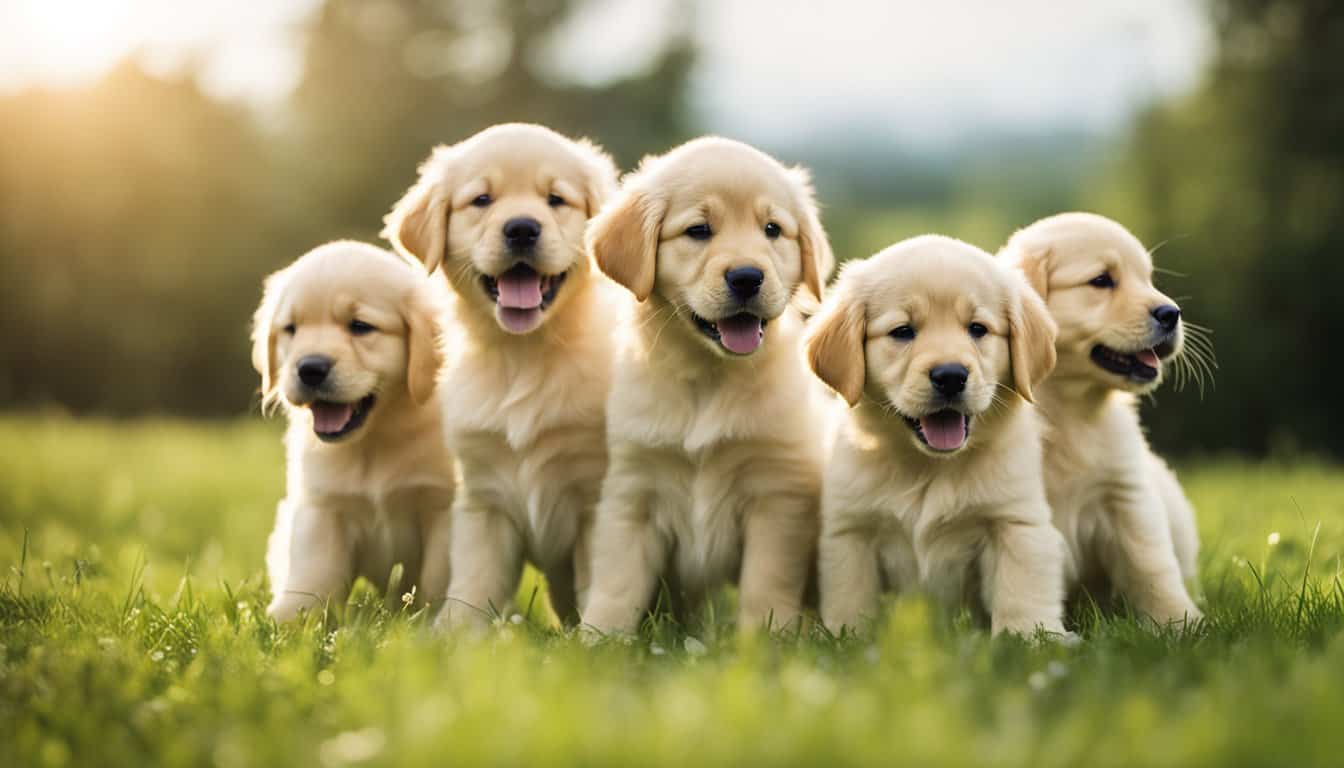
Frequently Asked Questions
https://www.youtube.com/watch?v=TWC9eT8Ou6E&embed=true
What is the average weight of a Golden Retriever puppy?
The average weight of a Golden Retriever puppy depends on its age and gender. According to Love Your Dog, male Golden Retriever puppies weigh between 10-22 lbs (4.5-10 kg) when they are 8 weeks old, while female Golden Retriever puppies weigh between 9-20 lbs (4-9 kg). By the time they are 6 months old, male Golden Retrievers weigh between 45-65 lbs (20-29 kg), while females weigh between 40-55 lbs (18-25 kg).
What factors affect the growth of a Golden Retriever?
Several factors can affect the growth of a Golden Retriever. According to Totally Goldens, genetics, nutrition, and exercise are the primary factors that affect the growth of a Golden Retriever. Proper nutrition is essential for optimal growth, and a balanced diet can help ensure that your Golden Retriever grows at a healthy rate.
At what age do Golden Retrievers typically stop growing?
Golden Retrievers typically stop growing at around 18-24 months of age. According to K9 Web, male Golden Retrievers reach their full height at around 12-18 months, while females reach their full height at around 10-14 months. However, it’s important to note that Golden Retrievers may continue to gain weight and muscle mass beyond this age.
How can I estimate how big my Golden Retriever will get?
You can estimate how big your Golden Retriever will get by using a Golden Retriever growth chart. According to Happy Dog Breeds, the average height and weight of a fully grown male Golden Retriever is 23-24 inches (58-61 cm) and 65-80 lbs (29-36 kg), respectively. The average height and weight of a fully grown female Golden Retriever is 21.5-22.5 inches (55-57 cm) and 55-70 lbs (25-32 kg), respectively.
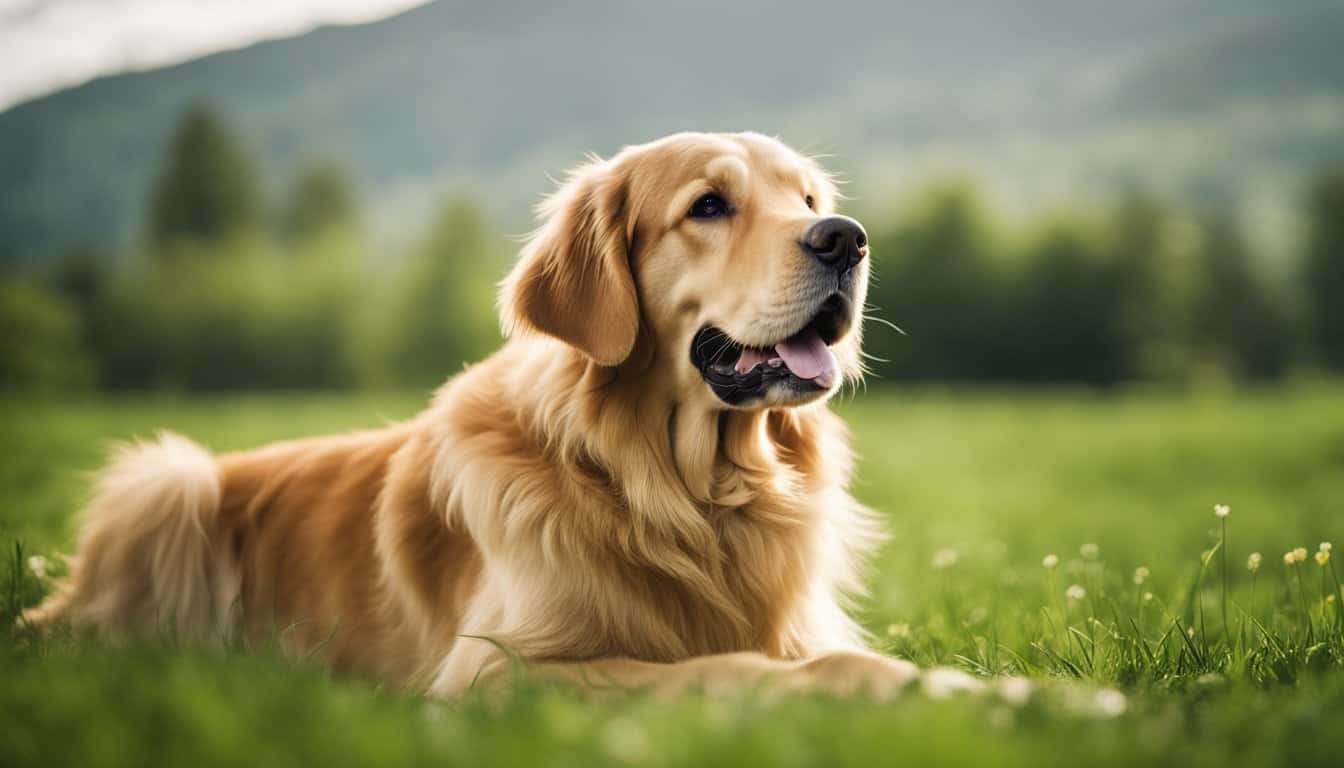
What is a healthy weight range for a 7 month old Golden Retriever?
A healthy weight range for a 7 month old Golden Retriever depends on its gender and size. According to Love Your Dog, male Golden Retrievers typically weigh between 45-65 lbs (20-29 kg) at 7 months old, while females typically weigh between 40-55 lbs (18-25 kg).
What are some common challenges during a Golden Retriever’s growth period?
Some common challenges during a Golden Retriever’s growth period include rapid weight gain, joint problems, and improper nutrition. According to Totally Goldens, it’s important to monitor your Golden Retriever’s weight and ensure that they are getting enough exercise and a balanced diet to prevent these issues. Additionally, regular vet check-ups can help catch any potential health problems early on.










